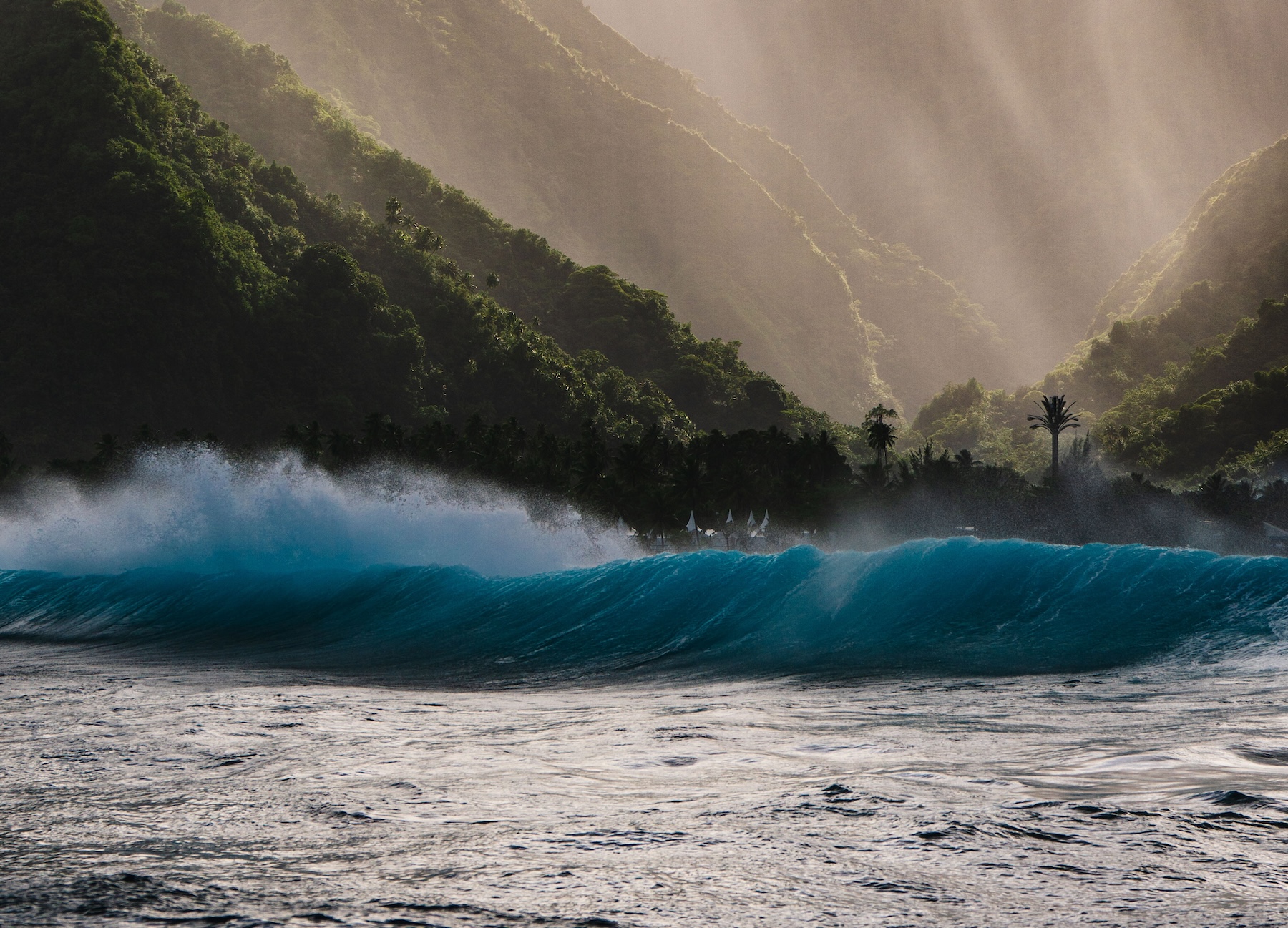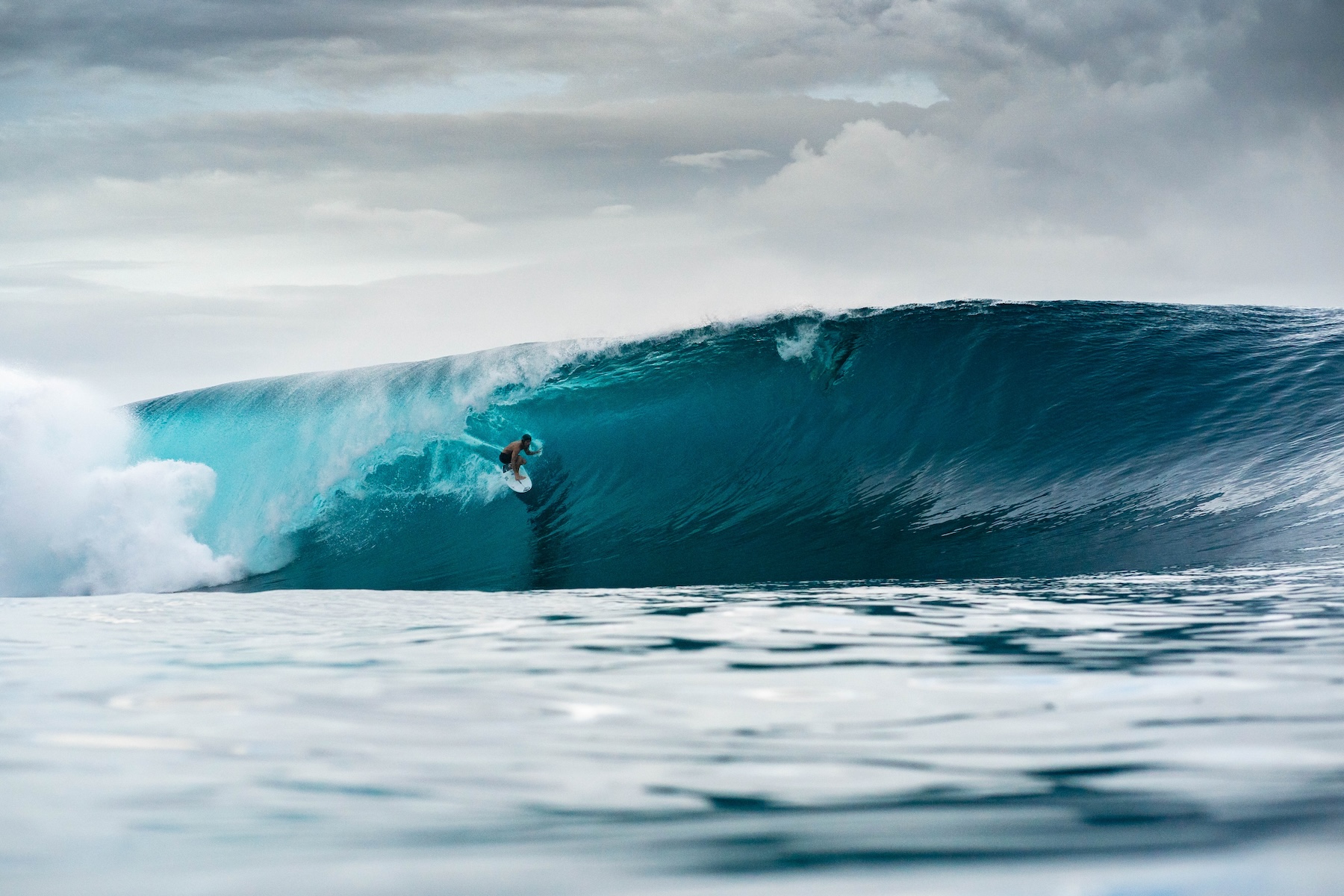1. Why Tahiti?
When the Paris 2024 Olympic organizers first considered the options for surfing, they looked at all possibilities, including their overseas territories. For the ISA, from a surfing performance point of view, there was no question about which location would provide the most exciting, most dramatic and most challenging playing field for the world’s best surfers: Teahupo’o.
Olympic surfing in Tahiti will be a truly authentic experience enjoyed by local fans and international audiences – with stunning images that will capture the world’s imagination. As one of the most iconic surf location in the world, Tahiti pays homage to the culture and heritage of the sport.
2. The Beauty of Teahupo’o
Teahupo’o is one of the most unique locations in the world and presents one of the biggest challenges in surfing. It is well-renowned for producing visions of perfect and awe-inspiring waves that the world’s best surfers revere like nowhere else on earth. Dramatic mountain peaks frame the deep blue, crystal clear water, which is lined by palm trees on the shore. No matter how you look at it, Teahupo’o is stunningly beautiful.
The fresh water coming from the mountains flows into the ocean and carves a section of the coral barrier creating a “pass”. This, together with the depth creates de perfect heavy left hand barrel like waves. When large waves enter this pass, the underwater bathymetry compresses and accelerates the wave energy, causing a sharp increase in the height and speed of each wave as it surges onto the reef.
The village of Teahupo’o is located where the paved roads end and dirt tracks begin, leading to it being historically designated as ‘The End of the Road’. The word Teahupo’o itself is often translated as ‘wall of skulls’.
3. Competition Schedule
The competition window for surfing will be from July 27 to August 5, 2024, with four days within that period required to complete the event. Prior to the opening of the window, six training days will be available for the athletes to have exclusive use of the location (July 21 – 26, 2024). Additionally, on July 26, 2024, an official Opening Ceremony will take place in Tahiti featuring traditional dances and a presentation of the competing athletes within the opening in Paris.
4. International Heavy-Hitters to Face Underdogs and Intimidating Local Champion
Led by Carissa Moore (USA), the five-time World Champion and Tokyo 2020 Gold Medalist, the women’s draw features a who’s-who of current heavy-water charging, including Pipeline champions Caitlin Simmers (USA) and Molly Picklum (AUS), 2023 Tahiti Pro winner and 2023 World Champion Caroline Marks (USA), as well as 2024 Tahiti Pro champion Vahine Fierro (FRA). Fierro is a local Tahitian who was one of the first to qualify for Paris 2024. Her victory just weeks ago bodes well in her campaign to win the host nation of France their first medal in Surfing.
After announcing her departure from competitive surfing at the start of the year, Moore’s appearance is scheduled to be her last in the competition jersey and with all of her training focused on one goal, the 31-year-old is aiming to go out on top.
Olympians and newcomers like Sarah Baum (RSA), Yolanda Hopkins (POR), Sanoa Dempfle-Olin (CAN), Anat Lelior (ISR), and Siqi Yang (CHN) could all throw a spanner in the works however. The youngest surfer to qualify for the Olympics at the age of 14, and China’s first, Yang has very little trepidation when it comes to waves of consequence and is looking to make a major mark on Surfing in the Olympic Games.
5. Medina’s Determination to Meet Longtime Rivals and Unlikely Upstarts
Three-time World Champion Gabriel Medina (BRA) undoubtedly has the most to prove in Tahiti. The surfer with the best overall record at Teahupo’o, boasting the highest average wave score and heat-winning percentage, Medina has made the Final six times out of 10 World Surf League Championship Tour events surfed, and won twice. The 30-year-old manufactured a Herculean effort to win the 2024 ISA World Surfing Games and earn the final qualification slot for Paris 2024. After losing the bronze medal match to place fourth in Tokyo 2020, Medina has one thing on his mind – the gold medal at Paris 2024.
Medina will meet many strong challengers in his path however, including two-time World Champion and his biggest rival, John John Florence (USA), who has an incredibly impressive Teahupo’o record of his own. Local Tahitian Kauli Vaast (FRA) has grown up a stone’s throw from Teahupo’o and is fiercely determined to proudly represent his home, as is one the best barrel-riders the world has ever known, Jack Robinson (AUS).
Many of those qualified have never competed in Tahiti before, but that doesn’t mean they won’t be a threat. Surfers like Alan Cleland Jr. (MEX), Alonso Correa (PER), Tim Elter (GER) and Bryan Perez (ESA) are well-versed in heavy waters and have been training hard to arrive in Tahiti ready to prove themselves. The recipient of the men’s universality slot, Perez narrowly missed out on qualification for Tokyo 2020 and will be looking to further cement his name on the international stage as the first of his country to represent surfing in the Olympics.

